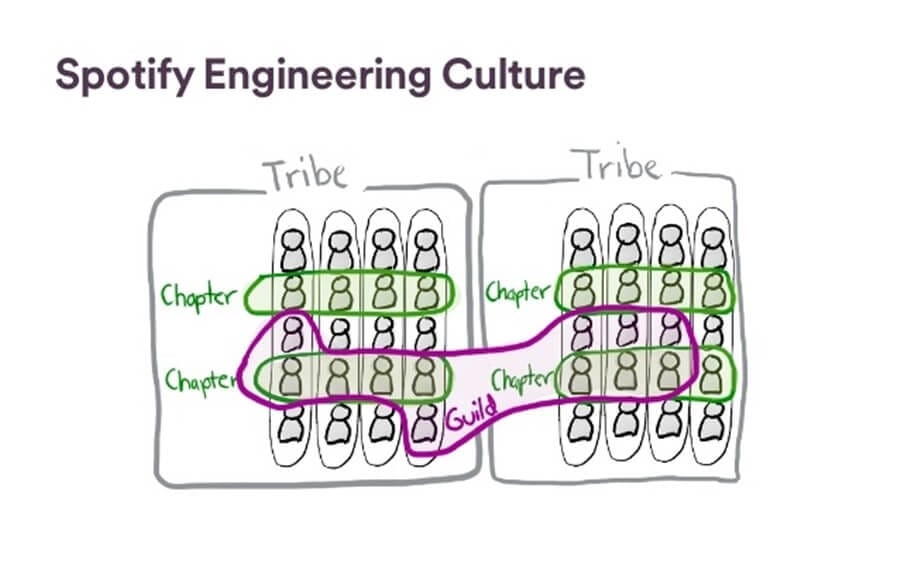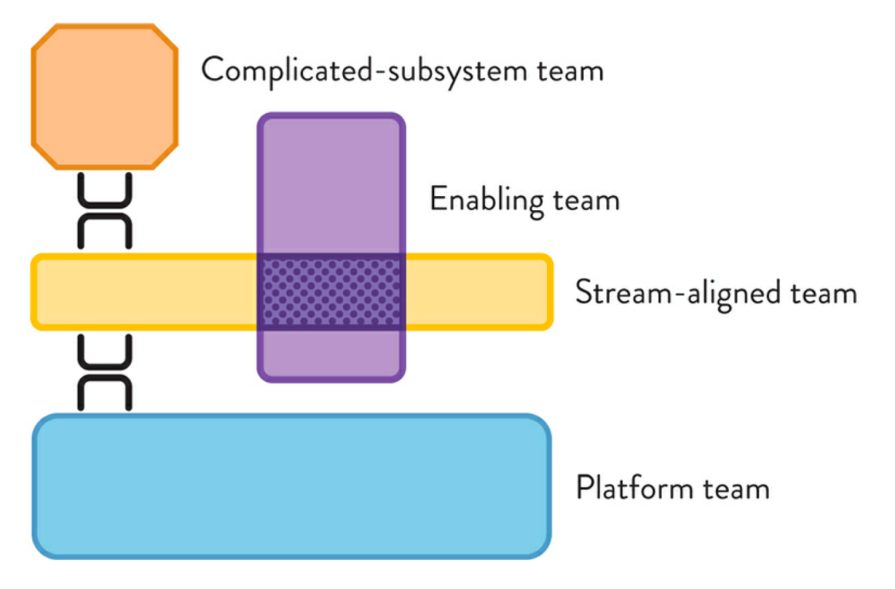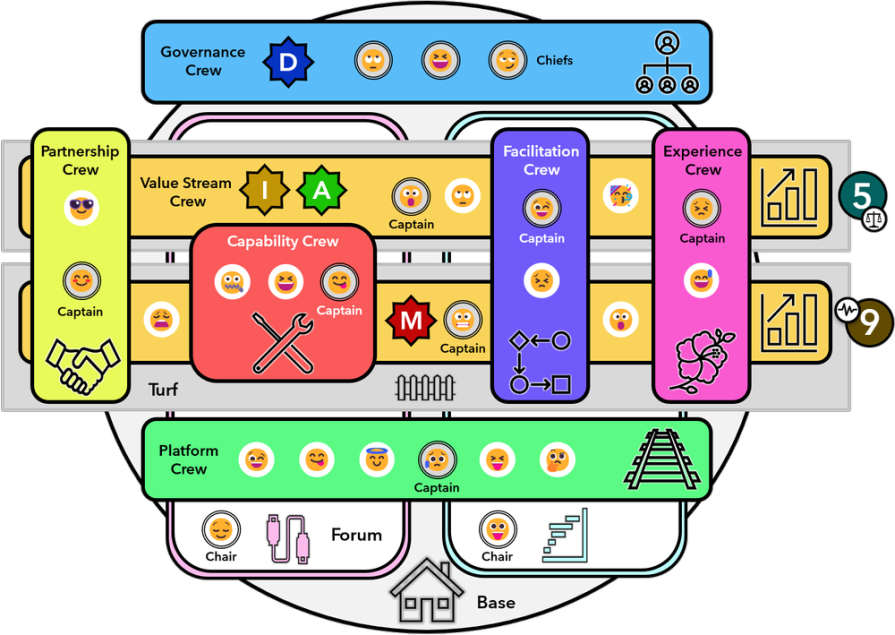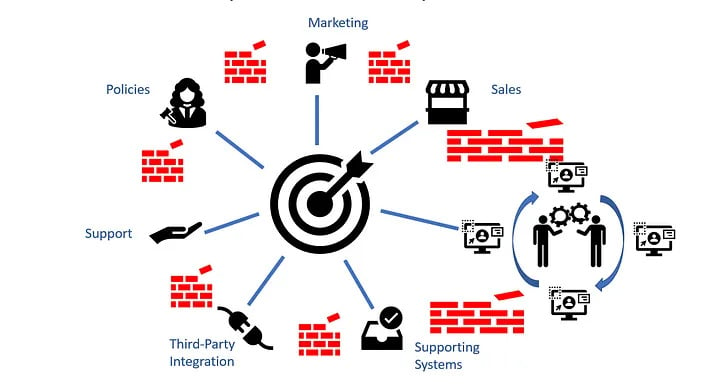There are many different ways to structure your organization to create value. You might use traditional ways, such as a matrix or division structure, as well as more modern ways, like a flat structure.

Agile approaches like LeSS, SAFe and the Spotify engineering culture invented or popularized scaling structures that should ensure self-organized, cross-functional teams. These structures have one big thing in common — stability.
But for most organizations, stability is a luxury, not a given. Many factors can get in the way — customers may develop their demands and new technology arises that demands a response. Whenever a change of circumstances happens, you need to respond rapidly.
When these changes arise, you may need to adapt your structure to accommodate the new circumstances. Because of this, stable organizational structures are often an illusion.
Here’s where unFIX comes into play. In this article, you’ll learn what the unFIX model is, how it benefits product management, and how to build an organizational structure around it.
The unFIX site says that unFIX is:
“Organization design for continuous innovation and better human experience.”
No organization is the same. unFIX offers the building blocks to create your unique organization design. It is specifically NOT another Agile scaling framework.
unFIX was created by Jurgen Appelo, a thought leader in leadership and product management. For unFIX he was inspired by recent developments in the industry, like the Spotify engineering culture, dynamic reteaming, team topologies, and fluid scrum teams.
unFIX centers on organizing people around a value stream or product experience. He specifically doesn’t limit it to software development, as agile frameworks often do.
Appelo argues that an experience isn’t limited to the core product:
“I deleted a shopping app from my phone that worked perfectly fine. But I very often had an item missing. I then had to go to the supermarket to get that missing item. Logistics made a mistake. Not the app. But I still deleted the app due to a terrible product experience.” — No Nonsense Podcast
unFIX assembles all the people who should collaborate to create a complete experience in the base. This base should be able to work autonomously.
unFIX draws its inspiration from three different product management principles — dynamic reteaming and fluid scrum teams, Spotify engineering culture, and team topologies.
Both concepts share the premise that changes in teams happen regardless of what you do. Dynamic reteaming focuses on patterns of reteaming and how to respond to them. Fluid scrum teams embrace the fact that people organize around goals and then reorganize when they achieve them to look towards the future. unFIX confirms this and is specifically designed to easily adapt an organization to changed needs.
The Spotify engineering culture inspired unFIX. Spotify has tribes and unFIX has its base. unFIX also took the concepts of autonomous cross-functional squads, chapters, and guilds, and turned them into crews and forums. The similarities are clear:

However, Spotify emphasizes autonomy so strongly that it can lead to siloes. Because of this, unFIX stands out from the Spotify engineering culture.
Team topologies are created to optimize team interactions for flow. The four topologies are:

unFIX uses these team topology concepts, but changes them slightly. The facilitation and experience crews in unFIX are enabling teams. Instead of value stream crews, unFix uses stream-aligned teams. The capability crew is a complicated subsystem team. Finally, the platform team is called platform crew.
At this point, you know that the base should house all the people who collaborate to create a complete experience, but let’s break down the subcategories that live within it:

Inside the base, there are then several types of crews. The crews that focus on building the experience are value stream crews and they cover the entire value stream. Typically, these crews build the product. However, as it covers the full experience, this includes people from support, finance, etc (if they play a role in that value stream).
unFIX also identifies the following supporting crews:
Apart from this, there are also forums. These are groups of people from various crews who hold similar interests, share ideas, and grow together.
All crews in a base work together towards their mutual goals. As soon as their goals are met, they set new goals and reorganize.
There are many other building blocks like domains, turfs, leagues, crowds, coalitions, and congresses. However, these are beyond the scope of an introductory article. It’s worth noting though that unFIX offers a considerable amount of scaling potential.
One of the major challenges within product management is finding a way to control the entire product experience. Typically, the different aspects of the experience work in isolation:

In the picture above, IT teams work together to build the core product. However, this is only a part of the complete picture. unFIX helps you to remove walls so that you can organize your team around mutual goals. This has the following benefits:
unFIX and its building blocks are very accessible. It doesn’t take a lot of explanation for people to understand them and use them. With this, unFIX allows you to be proactive in adapting your organization as often as needed.
To build an organization with unFIX, follow these steps:
unFIX can help you accelerate the creation of value within your team. It allows for flexible organizations with clearly defined roles that enable you to focus on the complete value stream. unFIX is a key tool for any product manager because of its adaptability, which makes it unique from agile models that often depend on stability.
As with any organizational change, seek out buy-in prior to the swap and try to communicate the value of unFIX to your team. It’s important to involve everyone responsible for the product experience to get the best results. During the process, allow your team to have some say over where they wish to be placed and always remember to iterate as the product changes.
Featured image source: IconScout

LogRocket identifies friction points in the user experience so you can make informed decisions about product and design changes that must happen to hit your goals.
With LogRocket, you can understand the scope of the issues affecting your product and prioritize the changes that need to be made. LogRocket simplifies workflows by allowing Engineering, Product, UX, and Design teams to work from the same data as you, eliminating any confusion about what needs to be done.
Get your teams on the same page — try LogRocket today.

A practical five minute revenue estimation method to help product managers compare ideas, drop low impact features, and prioritize smarter.

A practical guide for PMs who want to stop being bottlenecks, delegate smarter, and lead teams effectively with a clear ownership framework.

Stop letting unreliable data block features. Treat data as inventory to track quality, ownership, and ship with confidence.

Learn why slide decks slow teams down and explore better tools like whiteboards, PRDs, and prototypes to improve collaboration and alignment.